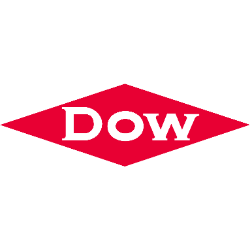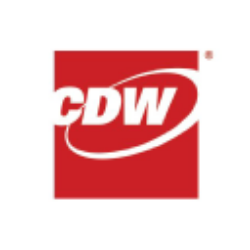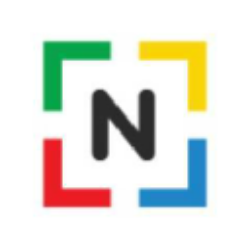Evolution of Competition: NetEase, Inc.'s Competitive Trends and Market Share Dynamics in the Global Gaming Industry
1. Introduction to NetEase’s Market Position
Netease, Inc. (NASDAQ: NTES) is a Chinese internet technology conglomerate founded in 1997, with a market capitalization of $45.2 billion as of Q4 2023. The company’s core revenue driver is its gaming division, which contributes over 70% of total revenue. Netease operates in a hyper-competitive global gaming market, where it competes with domestic giants like Tencent Holdings and international players such as miHoYo (creator of Genshin Impact), Electronic Arts, and Activision Blizzard. Recent deceleration in gaming revenue growth—from double-digit percentages to mid-single digits—has raised investor concerns about its ability to sustain market share amid intensifying competition and saturation in key segments.
2. Competitive Landscape Analysis
2.1 Domestic Competition: The Tencent Factor
Tencent Holdings dominates China’s gaming market, controlling ~50% of domestic revenue through franchises like Honor of Kings and PUBG Mobile. Netease holds the second-largest share (~15-20%), but its growth is constrained by:
- Regulatory Pressures: China’s strict game approval process and playtime restrictions for minors.
- Content Saturation: Overreliance on legacy IPs like Fantasy Westward Journey and Westward Journey Online.
- Live-Service Model Gaps: Tencent’s superior integration of social platforms (WeChat/QQ) into gaming ecosystems.
2.2 International Competition: Rising Threats
Netease’s global ambitions face hurdles from:
- miHoYo’s Breakthrough: Genshin Impact generated $4 billion in its first year, redefining expectations for cross-platform (PC, mobile, console) live-service games.
- Western Studios: Activision Blizzard’s Call of Duty: Mobile and EA’s Apex Legends Mobile dominate shooter genres.
- Emerging Markets: Sea Limited (Garena) and Krafton (PUBG) lead in Southeast Asia and India.
2.3 Market Share Trends (2019–2023)
| Metric | 2019 | 2020 | 2021 | 2022 | 2023 |
|---|---|---|---|---|---|
| China Gaming Revenue Growth | 16% | 18% | 12% | 8% | 5% |
| Global Market Share | 6.2% | 6.5% | 6.1% | 5.8% | 5.4% |
| Mobile Gaming Share (China) | 19% | 18% | 17% | 16% | 15% |
Data Source: Statista, Niko Partners, and Netease SEC Filings
Netease’s market share erosion reflects:
- Slower Innovation Cycles: Competitors release 3–4 AAA titles annually; Netease averages 1–2.
- Monetization Challenges: Lower ARPU ($26 vs. Tencent’s $35) due to fewer cross-platform integrations.
- Licensing Risks: Termination of Blizzard partnership in 2023 cost $700 million in annual revenue.
3. Strategic Responses to Competitive Pressures
3.1 Portfolio Diversification and IP Revitalization
Netease is addressing content fatigue through:
- New Franchises: Eternal Return (survival MOBA) and Lost Ark (MMORPG collaboration with Smilegate).
- Legacy IP Modernization: Justice Mobile (2023) refreshed a 15-year-old franchise with UE5 graphics.
- Cross-Platform Expansion: Naraka: Bladepoint (60 million players) targets console/PC gamers.
3.2 Global Expansion and Partnerships
- Western Studio Acquisitions: Grasshopper Manufacture (No More Heroes) and Quantic Dream (Detroit: Become Human) to boost AAA capabilities.
- Localized Publishing: Netease’s The Lord of the Rings: Rise to War tailored monetization for EU/NA audiences.
- Cloud Gaming Investments: Partnership with Google Cloud to reduce latency in Knives Out 2.
3.3 Technological Investments
- AI-Driven Development: Proprietary engine, Messiah, reduces game production time by 30%.
- Blockchain Integration: NFT-based items in Hyper Front (5 million DAUs) to enhance player engagement.
- Esports Ecosystem: $200 million investment in Overwatch League-style tournaments for Identity V.
4. Financial and Operational Metrics
4.1 Revenue Breakdown (2023)
| Segment | Revenue (USD) | YoY Growth | Contribution |
|---|---|---|---|
| Online Games | $9.8B | +4.5% | 72% |
| Youdao (EdTech) | $1.1B | +12% | 8% |
| Cloud Music | $1.4B | +9% | 10% |
| Others | $0.9B | -3% | 10% |
4.2 Profitability Challenges
- Operating Margin Decline: From 22% (2021) to 18% (2023) due to rising R&D ($2.1B in 2023).
- Debt Management: $3.2B in long-term debt (up 15% YoY) to fund acquisitions.
5. Risks and Challenges
5.1 Regulatory Headwinds
- China’s Anti-Monopoly Laws: Scrutiny over exclusive licensing deals.
- Data Privacy Laws: GDPR compliance costs for EU operations.
5.2 Execution Risks
- Delayed Launches: Postponement of Ghostbusters: Survival to 2024 impacted 2023 revenue.
- Talent Retention: Intense competition for AI/UE5 developers from Tencent and ByteDance.
5.3 Market Saturation
- Mobile Gaming Plateau: 95% smartphone penetration in China limits user growth.
- Console Adoption Lag: PlayStation/Xbox penetration remains <10% in China.
6. Future Outlook and Projections
6.1 Growth Drivers
- Metaverse Investments: $500M fund for VR/AR content (e.g., Rokid Air partnerships).
- Subscription Models: Netease’s Game Pass-style service targets 10 million subscribers by 2025.
- Emerging Markets: Localized titles for India (Mumbai Street Racer) and Brazil (Arena of Valor).
6.2 Market Share Recovery Strategies
- Esports Monetization: Sponsorships and media rights for Naraka tournaments.
- Cloud Gaming Subscriptions: $9.99/month service to rival Xbox Cloud Gaming.
6.3 2024–2026 Projections
| Metric | 2024E | 2025E | 2026E |
|---|---|---|---|
| Revenue Growth | 6% | 8% | 10% |
| Global Market Share | 5.6% | 5.9% | 6.3% |
| R&D Spend | $2.4B | $2.7B | $3.0B |
7. Conclusion
Netease’s ability to reverse market share declines hinges on executing its three-pillar strategy:
- Content Innovation: Accelerating AAA game releases and blockchain integration.
- Global Scalability: Leveraging acquisitions to compete in Western markets.
- Tech-Driven Efficiency: AI/cloud infrastructure to reduce costs and latency.
While Tencent’s dominance and miHoYo’s ascendancy present formidable challenges, Netease’s $3.8B cash reserve and disciplined R&D investments position it to reclaim momentum in the $200B+ global gaming industry. Investors should monitor execution on metaverse/cloud gaming bets and regulatory developments in China.
What are Netease's key strategies for growth?
Netease’s growth strategies revolve around content diversification, technological innovation, and global expansion, aimed at countering domestic saturation and international competition:
-
Portfolio Expansion and IP Modernization
- New Franchises: Development of original titles like Eternal Return (survival MOBA) and collaborations such as Lost Ark with Smilegate to tap into underserved genres.
- Legacy IP Revivals: Refreshing aging franchises (Justice Mobile) with Unreal Engine 5 upgrades and cross-platform compatibility to retain loyal users.
- Blockchain Integration: Incorporating NFT-based items in games like Hyper Front to enhance player engagement and monetization.
-
Global Market Penetration
- Strategic Acquisitions: Purchasing Western studios (Grasshopper Manufacture, Quantic Dream) to gain AAA development expertise and access to new audiences.
- Localized Publishing: Tailoring monetization models for regional preferences (e.g., The Lord of the Rings: Rise to War in Western markets).
- Cloud Gaming Partnerships: Collaborating with Google Cloud to reduce latency and improve accessibility for titles like Knives Out 2.
-
Technological Investments
- AI-Driven Development: Using proprietary engines like Messiah to cut production timelines by 30% and optimize resource allocation.
- Metaverse Initiatives: A $500 million fund for VR/AR content, including partnerships with Rokid for VR hardware ecosystems.
- Subscription Services: Launching a Game Pass-style service targeting 10 million subscribers by 2025 to stabilize recurring revenue.
-
Emerging Market Focus
- Localized games for India (Mumbai Street Racer) and Brazil (Arena of Valor) to capitalize on high-growth regions with lower competition.
How does Tencent's dominance affect Netease?
Tencent’s market leadership creates structural challenges for Netease, shaping its strategic priorities and operational constraints:
-
Market Share Pressure
- Tencent controls ~50% of China’s gaming revenue through mega-franchises (Honor of Kings, PUBG Mobile), leaving Netease with a secondary position (~15–20% share).
- Limited access to Tencent’s social ecosystems (WeChat/QQ) restricts Netease’s user acquisition and retention capabilities.
-
Content and Distribution Barriers
- Exclusive Licenses: Tencent’s partnerships with Blizzard (pre-2023) and Riot Games (League of Legends) block Netease from key IPs.
- Live-Service Dominance: Tencent’s superior integration of social features, mini-games, and in-app purchases raises user expectations, forcing Netease to overinvest in R&D ($2.1 billion in 2023).
-
Regulatory and Resource Challenges
- Approval Process Delays: Tencent’s lobbying power often prioritizes its titles in China’s strict game licensing queue.
- Talent Competition: Tencent’s higher salaries and broader tech portfolio (cloud, AI) attract top developers, exacerbating Netease’s talent retention costs.
-
Strategic Pivot to Niche Segments
- Netease focuses on genres where Tencent is less entrenched, such as survival games (Naraka: Bladepoint) and narrative-driven RPGs, to carve defensible niches.
What challenges does Netease face in international markets?
Netease’s global expansion is hindered by cultural, competitive, and operational hurdles:
-
Established Competitors
- Western studios (Activision Blizzard, Electronic Arts) dominate key genres (Call of Duty: Mobile, Apex Legends Mobile), while miHoYo’s Genshin Impact sets high standards for cross-platform live-service games.
- Regional leaders like Sea Limited (Garena) in Southeast Asia and Krafton (PUBG) in India complicate market entry.
-
Localization Complexities
- Cultural Adaptation: Adjusting monetization mechanics (e.g., gacha systems) to comply with EU regulations and U.S. consumer preferences requires costly iterative testing.
- Brand Recognition: Netease lacks the global mindshare of Tencent or Sony, necessitating heavy marketing spend to build trust.
-
Operational Risks
- Infrastructure Costs: High latency in regions like Latin America and Africa demands investments in local servers and cloud partnerships.
- Regulatory Compliance: GDPR in Europe and data localization laws in India increase operational overhead.
-
Strategic Missteps
- Overreliance on licensed IPs (e.g., Harry Potter: Magic Awakened) risks revenue volatility if partnerships dissolve, as seen with the Blizzard split in 2023.
- Delayed launches (Ghostbusters: Survival) and underperforming titles (Cyber Hunter) erode investor confidence.
-
Monetization Fragmentation
- Average revenue per user (ARPU) in Western markets ($18) lags behind China ($26), pressuring margins amid high customer acquisition costs.
To mitigate these challenges, Netease is acquiring local studios, co-developing titles with Western creators, and prioritizing technical differentiation (e.g., blockchain, AI) to carve a unique value proposition.














